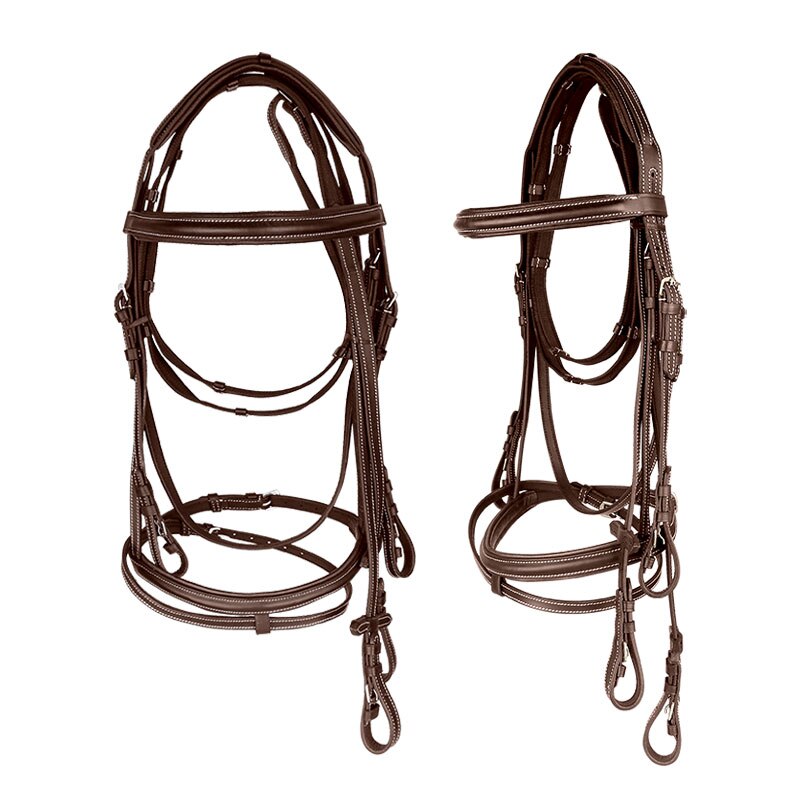
These are not just tools for guiding and controlling horses; they are also essential elements in equestrian fashion and horsemanship. With various styles, materials, and designs available, selecting the right bridle and halter is crucial for both function and aesthetics. In this guide, we’ll explore how to choose and use horse bridles and halters to ensure the comfort and safety of your horse while enhancing your equestrian style.
1. Bridles and Halters: Understanding the Basics
- Halters: Halters are typically used for leading and tying horses. They consist of a headpiece, noseband, and throat latch. They are essential for handling horses on the ground, grooming, and tacking up.
- Bridles: Bridles are more complex and include a headstall, bit, reins, and sometimes additional features like a browband or noseband. They are used for riding and controlling the horse.
2. Material Matters
- Leather: Leather bridles and halters are classic and timeless. They are durable and become more comfortable with time. High-quality leather is essential for longevity.
- Nylon: Nylon halters are durable and easy to clean. They are often used in everyday handling. However, for riding, leather bridles are more common.
3. Style and Design
- Traditional Designs: Classic leather bridles and halters have timeless designs and are ideal for formal equestrian events. They may feature decorative stitching or buckles.
- Color Options: Some come in a variety of colors, allowing riders to coordinate their gear with their horse’s coat color or personal style.
4. Choosing the Right Fit
A proper fit is crucial for the comfort and safety of your horse. Ensure that the bridle or halter is neither too tight nor too loose. Adjust it according to your horse’s specific measurements, and regularly check for any wear or damage.
5. Bridle Bits and Rein Styles
The choice of bit and rein style is important for riding and communicating with your horse. Different bits and reins offer varying levels of control, so select the one that suits your riding style and your horse’s behavior.
6. Safety and Comfort
Prioritize the safety and comfort of your horse. Ensure that the bridle or halter doesn’t cause chafing or discomfort. Regularly inspect the gear for any signs of wear and replace any damaged parts.
7. Grooming and Cleaning
Proper care and maintenance of leather bridles and halters are essential for their longevity. Clean and condition the leather regularly to prevent it from drying out or cracking.
Conclusion
Choosing the right horse bridle and halter is a crucial aspect of equestrian care and style. Whether you prefer the timeless elegance of leather or the practicality of nylon, the proper fit and comfort of your horse should always be the top priority. By understanding the basics, materials, style, and safety measures, you can ensure that your horse is not only guided but also adorned in a way that reflects your equestrian passion and style.
